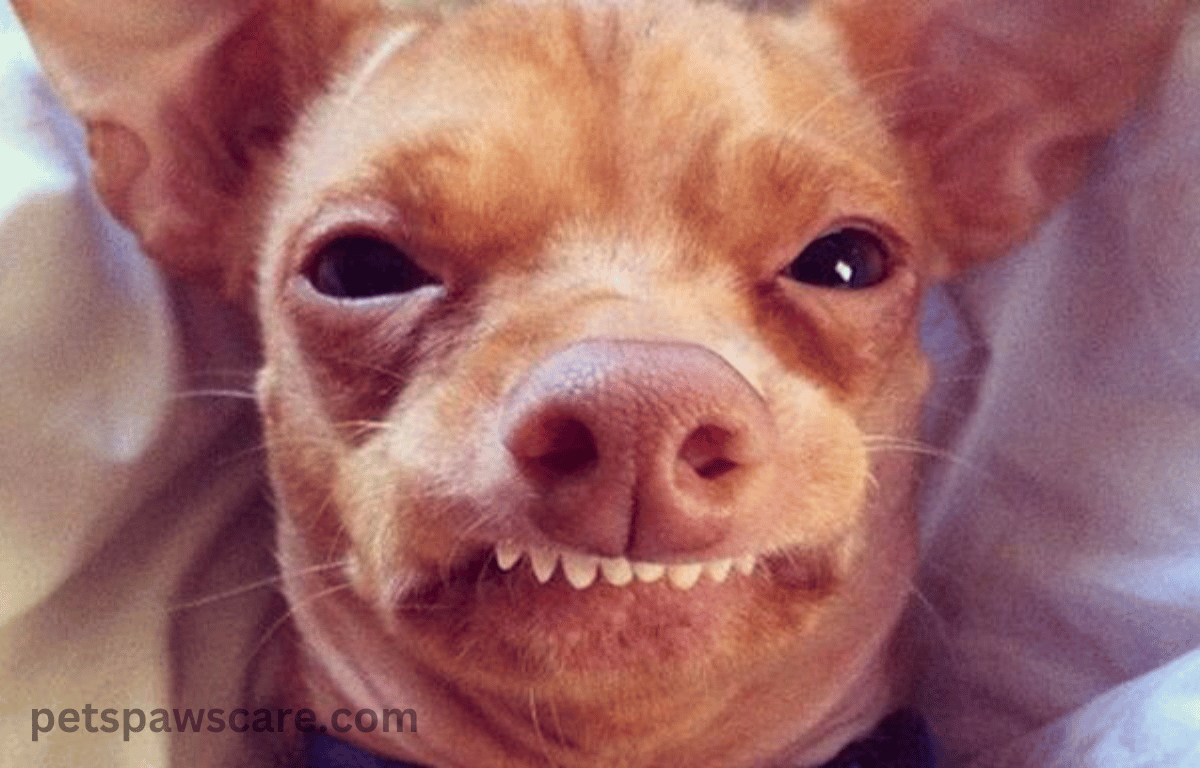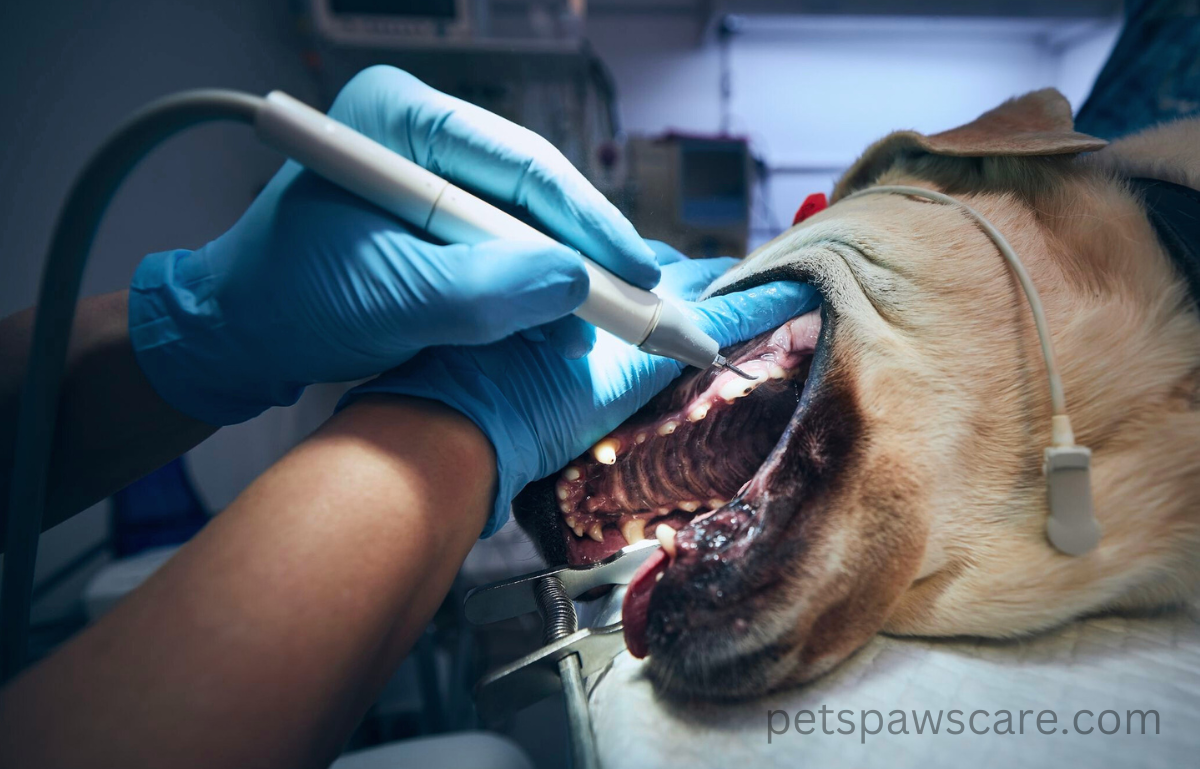What Is an Overbite?
When managing a dog’s overbite, often caused by genetic or hereditary factors, the lower jaw may be shorter than the upper jaw, leading to issues like overshot jaw, overjet, or parrot mouth. Breeds with narrow, pointed muzzles such as collies, shelties, dachshunds, and German shepherds, as well as certain crossbred dogs, are more prone to this condition.
These dogs may develop a class 2 malocclusion or mandibular brachynathism, where the teeth become improperly locked, leading to crookedness as the jaw fails to grow appropriately. It’s essential to monitor the aligning of the teeth to prevent discomfort in these breeds.
Treating a Dog Overbite
When dealing with an overbite in dogs, early dental examinations are crucial, especially for puppies between 8-12 weeks. At this stage, you can catch the first signs of misalignment. By 10 months, a dog’s jaw alignment becomes permanently set, making it more challenging to treat. Brushing your dog’s teeth regularly can help prevent buildup and avoid further complications. It’s also important to avoid games like tug-of-war, which can put extra strain and stress on the jaw, possibly worsening the deformation.
For more severe cases, veterinarians may recommend corrective measures such as spacers, braces, or other orthodontic accessories. These are necessary to correct misalignment and improve dental health. In some cases, tooth extraction might be required, especially with baby teeth that are misaligned. Removing these early can help the jaw loosen and realign before the adult teeth emerge. During this period, softer foods and dietary changes are necessary to ensure the dog’s mouth remains tender and healthy.

10 Things You Can Do About Your Dog’s Overbite
A dog overbite, caused by genetic or hereditary factors, occurs when the lower jaw is noticeably shorter than the upper jaw, leading to overshot jaw, overjet, or parrot mouth, with teeth out of alignment. This condition, known as class 2 malocclusion or mandibular brachygnathism, can cause pain and discomfort, but with proper care, you can help improve your pet’s quality of life.
1. Buy a Better Dog Bowl
If your dog has an overbite, you might have noticed that picking up food is more challenging for them due to the misalignment of their lower and upper jaws. The teeth often overlap, making it difficult for them to get a solid bite, especially as the meal progresses. Conventional pet bowls can make eating harder for dogs with overbites, as it becomes tougher to grab the remaining food. This is the main reason why a better bowl is needed to reduce the challenge during meals.
The Fix
Here are some key points for managing your dog’s overbite using a tilted bowl:
- A tilted dog bowl helps by changing the angle at which your dog eats and drinks.
- It encourages your dog to extend its neck and head comfortably, making food and water easier to reach.
- This reduces straining of the jaw and neck, providing a more relaxed position during meals.
- Using a tilted bowl can reduce discomfort and improve the overall dining experience for dogs with overbites.
- It also helps prevent choking and digestive problems caused by eating at awkward angles or too quickly.
Also Read: Can Dogs Eat Jicama?
2. Make His Diet Easier
To help with your pup’s misaligned teeth and jaw, it’s important to simplify your dog’s diet by offering nutritious, high-quality, and nutrient-rich food. A soft formula makes feeding easier for a dog with an overbite, as it’s gentle on the mouth and jaw. Thoughtful preparation and care in choosing the right food are key to supporting your dog’s health.
Key Tips
Hydrating and softening crunchy kibble with warm water or broth can make meals easier for dogs with an overbite. Soaking the food overnight and smashing the chunky pieces with a fork helps to remove tough chunks and make the dish more palatable. Pet owners can also rewarm the meal in the microwave, ensuring their four-legged friend gets the appropriate amount of nutritious food daily while making the meal more enjoyable with options like canned foods or adding gravy.
3. Ball Therapy
Dogs with misaligned teeth can benefit from ball therapy, where a simple ball becomes a fun and playful way to help improve alignment. This amusing and intriguing toy can assist in reducing the need for orthodontic procedures while keeping pups entertained.
How It Works
Using an object like a ball with the right size and density in your dog’s mouth can create the necessary resistance for biting and help exert force on the teeth. This process, guided by a veterinarian or dental specialist, ensures that canine teeth develop in a favorable position, preventing long-term trauma and discomfort from incorrect alignment.
Try Ball Therapy With a Kong Toy
Using balls that are moderately dense, like Kong ball toys, can help correct the misalignment of teeth caused by an overbite. The rubber material offers just the right amount of resistance, allowing your dog to exercise their jaw while applying gentle force, making it a great choice compared to soft or tennis balls.
4. Proper Oral Care
For dog overbites, the majority of cases can be managed with proper oral hygiene and routine dental cleanings to prevent the overbite from becoming aggravated. Regular tooth brushing and using items like toothbrushes, gels, and sprays can help address misaligned teeth and maintain good dental care.
Consistently cleaning your dog’s teeth helps avoid abnormal tartar and plaque buildup, which can worsen the misalignments. Starting early, as the puppy ages, is the best way to ensure effective care for your dog’s canines.
5. Professional Dental Cleaning
Proper oral care is key to managing your pup’s overbite, and a visit to a canine dentist can help pinpoint ways to improve it. During a professional dental cleaning, the expert performs a comprehensive dental exam, including teeth cleaning and polishing to eliminate plaque, tartar, and prevent periodontal disease.
At the dental cleaning appointment, your dog will be asleep under general anesthesia, allowing the vet to perform a thorough oral cleaning. This not only results in cleaner teeth but also helps the vet determine if any further treatment is needed to manage the overbite.
6. Get a Treatment Plan
Your vet can help guide you in creating a treatment plan by assessing whether the lower canines strike the palate or roof of the mouth. The treatment strategy will focus on providing a comfortable and functional bite for your dog if necessary.
Possible treatments could include:
Your vet can guide you in creating a treatment plan for your dog’s overbite by assessing if the lower canines strike the palate or roof of the mouth. The goal is to develop a treatment strategy that ensures a comfortable and functional bite for your dog.
7. Orthodontic Procedures
For a dog’s overbite, especially if it’s severe, orthodontic procedures like spacers or braces can help align the bite and reduce pain. These orthodontic devices, applied by a vet, may need to stay in place for a few weeks or months, or up to two years in extreme cases, to help correct the problem in your dog’s mouth.
8. Jaw-stabilizing Muzzles
Take the time to research custom mouth guards or muzzles that can help stabilize your dog’s jaw and prevent additional wear on misaligned teeth. These special muzzles not only keep the jaw steady but can also benefit dogs with an overbite, helping during veterinary exams and dental cleanings.
9. Regular Checkups
Taking your four-legged companions for annual checkups is crucial for spotting health issues like a dog’s overbite early. These yearly exams give pet owners the opportunity to ask about any queries or worries, while the vet can identify and treat problems with the teeth or jaw structure before they cause more damage.
10. Peer Support
Pet owners who have faced a similar issue with their dog’s overbite often find support groups helpful. These groups, both online and at local animal rescue centers, allow you to exchange valuable advice and gain insight on managing the problem. Joining a Facebook group can provide a great way to connect with others navigating the same challenges.
Attending local dog training classes or workshops is another way to meet experienced trainers and fellow pet owners. In a supportive, hands-on environment, you can learn practical tips and techniques for handling your pup’s condition while building a strong support network.
Final Thoughts
Addressing tooth alignment issues in dogs can prevent pain and suffering, improving your pup’s quality of life. Simple steps like using a proper bowl, softening food, and providing a durable toy can encourage better-aligned teeth. Regular consultations with a veterinarian and maintaining healthy oral hygiene will keep plaque and tartar from worsening the dog’s overbite and help develop an effective treatment strategy.
People also ask
- Can a dog’s overbite be fixed?
Yes, a dog’s overbite can often be fixed or improved through various methods such as dental treatments, orthodontic devices like braces or spacers, and in some cases, tooth extraction. Treatment depends on the severity of the overbite and the dog’s age. - What is the fastest way to fix an overbite?
The fastest way to address a dog’s overbite usually involves orthodontic treatments, such as spacers or braces, combined with early intervention. If caught early in puppies, tooth extraction may also help create space for the jaw to realign naturally. - Can an overbite correct itself?
In some cases, a mild overbite may correct itself as the dog matures, particularly in puppies. However, if the overbite is more severe, medical intervention might be necessary to prevent further complications. - Can an overbite be fixed naturally?
While some mild overbites may improve as a dog grows, severe cases typically require professional treatment. Natural methods like adjusting diet or using specific toys might alleviate discomfort but won’t fully correct the issue without veterinary care.

